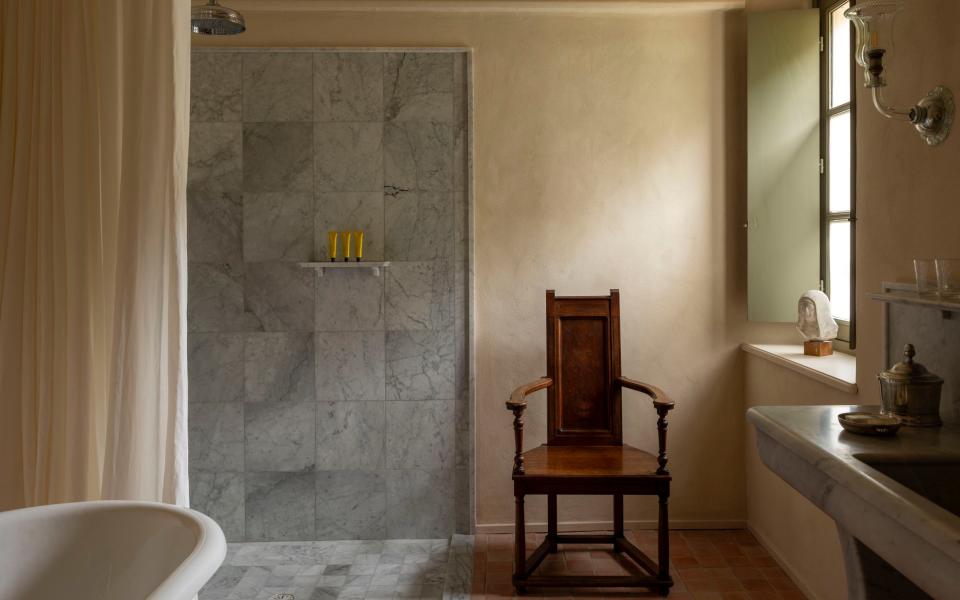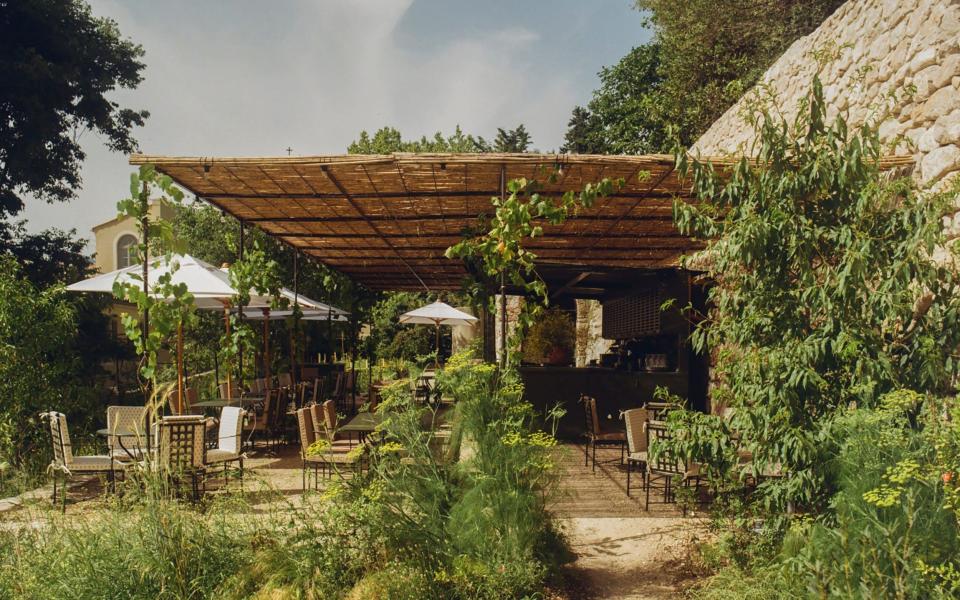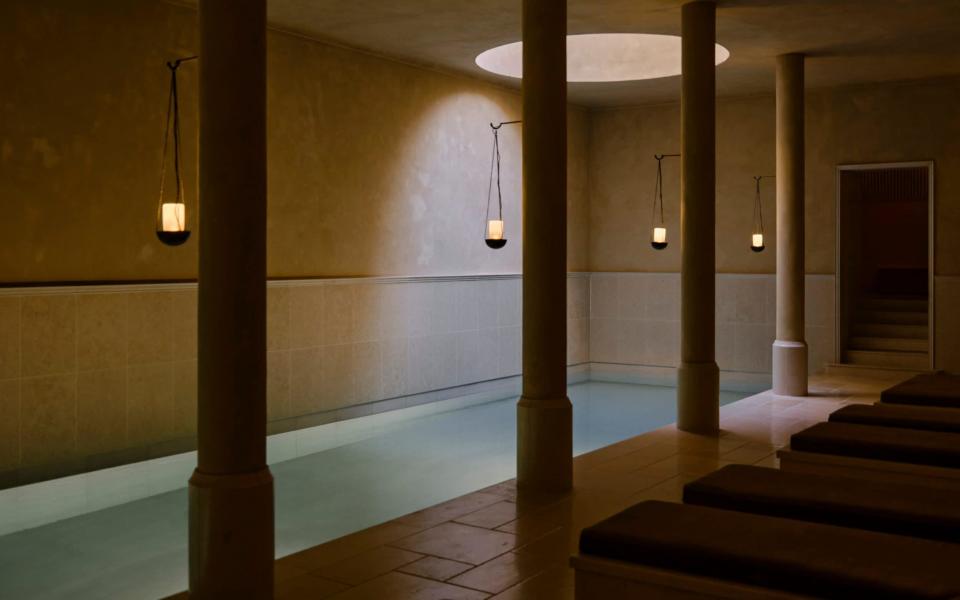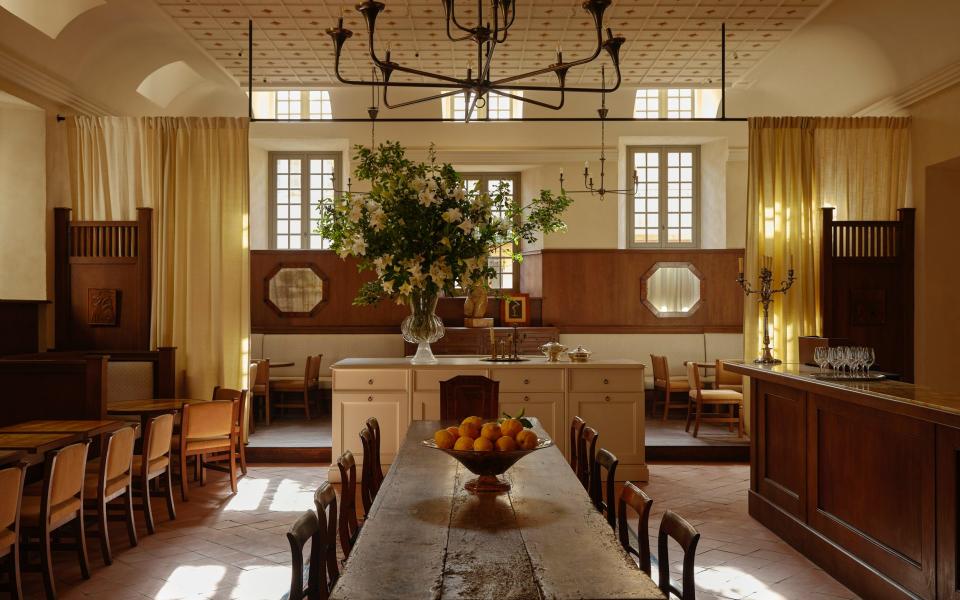Here are three questions. Can one hotel change travellers’ perceptions of a destination? Do repurposed buildings – banks, department stores, prisons, offices, breweries, train stations – ever really work as places of hospitality, places that exude heart and soul? And would you consider Nice as a destination for a ruinous short break?
Let me answer my own questions in order. 1) Rarely. 2) Very rarely. 3) Not yet, as long as I can stay at the new Hôtel du Couvent, and not just in the summer – remember that Nice was made fashionable as a winter resort by Queen Victoria in the late 19th century.
The converted 88-bedroom Hôtel du Couvent, opened in June in the heart of Vieux Nice, is one of those rarities. A former nunnery, it functions wonderfully as a hotel in this beautiful, diverse art city, a heady mix of French and Italian character, architecture and food, set between sea and mountains.
The hotel already feels like an integral part of the city, an oasis of calm and authenticity. Its presence will ensure that Nice transforms from the gateway to the Côte d’Azur into a sought-after destination in the eyes of discerning travellers.

The city is already in the spotlight thanks to hosting the Tour de France this year and hosting football at the Olympics, and has also seen a flurry of new restaurants and hotels (including the vibrant Mama Shelter with its popular rooftop bar and the boutique Palais Ségurane, and the recently acclaimed renovation of the legendary Hotel Le Negresco).
It took 10 years, £85m and a proven hospitality disruptor with a gold pirate earring and tattooed arms to create the Hôtel du Couvent. It’s hard to think of anyone other than Valérie Grégo with the necessary vision, agility and dedication to the Niçoise who could have done a better job for the 1604 building, last occupied in 1985. “It’s time for a new journey into the world of luxury travel,” he says.
What does that mean for an abandoned monastery, hidden beneath the steep Colline du Château in the old town with its narrow streets and famous flower and food markets?
It means that the restoration and transformation have been carried out with a precision rarely seen. It means that the architect, Valérie’s brother Louis-Antoine Grégo, tracked down the last surviving nun, over 90 years old, and her box of faded photographs of the Couvent de la Visitation before she and a dwindling group of sisters finally left.
This means that interior designers Charlotte de Tonnac and Hugo Sauzay, partners in both life and work, have played with the tension between emptiness (as in the wide corridors with limestone floors) and comfort (as behind cell-like doors, soothing bedrooms and suites in which the original materials and colours reappear).


Small contemplative paintings hang close to the light of the windows, as the nuns did; wooden furniture mixes with natural linen; ceiling lampshades are made of plaster, so that you hardly notice them; vases are filled with natural flowers. “We have done our best to be careful, to treat this building with respect,” says Grégo.
This also means that the new terraced gardens that extend down to the swimming pool above the hotel have a completely natural look, with arbours of fennel, climbing beans and wild peas, mixed with jasmine and roses.
They are designed by Tom Stuart-Smith, designed by James Basson and based on permaculture principles, and at first I was thrown off by them.
Just as I initially found the hotel too basic, but later fell for the thoughtful, scholarly tranquility that reigns there (there is also an art library focusing on the École de Nice movement), I was initially confused by the tangle of borders full of herbs, vegetables, fruit and weeds.
“They are not weeds,” the head gardener told me firmly, “they are spontaneous vegetation, needed to nourish and shade the soil. If you look closely, they are beautiful.”


A group of women built this monastery and lived within its walls for almost 500 years. With this garden and the creation of a fruit, vegetable and poultry farm in the hills above the town (which guests can visit for picnic lunches), Grégo wants to do the same for the hotel.
Enter the Hôtel du Couvent and you find yourself in a huge, tree-shaded courtyard, like a town square. On Saturdays, there is a public farmers’ market here, while the bistro on the street side of the hotel (there is also an indoor/outdoor restaurant in the old refectory and a swimming pool) guinguette in the gardens) the Sunday afternoon is offered at a variable from/to price, in the hope that locals pay the least and hotel guests the most.
“Maybe it’s an experiment that works, maybe it doesn’t. We’ll see.” It’s not for nothing that Grégo studied philosophy at university; it’s not for nothing that Proust madeleines are served to every arriving guest; it’s not for nothing that opera librettos, play scripts and early editions of French novels line the bedrooms.
Just as the nuns had to maintain their intellectual and physical needs, so do we. This includes visiting the spa, an underground complex of Roman baths.


In addition to feeding themselves, the nuns also had to heal themselves. That is why, in the courtyard, next to the hotel bakery, where the original bread oven was found, guests will find an old-fashioned pharmacy, its walls lined with wooden drawers, made for the Niçoise herbalist Gregory Unrein, who is present every afternoon for consultations. The special herbal tea he mixed for me immediately cured my sore throat.
Like Valérie Grégo, I have always believed that hotels can have a positive or negative impact on the community around them and on the people who stay in them, depending on how they are designed and for what purpose.


If I’m right, then both the people of Nice and those lucky enough to stay at the Hôtel du Couvent have been enriched by its careful transformation from a religious sanctuary to a place of luxurious, modern hospitality.
Nice now has the contemporary hotel in its heart that it deserves.
Fiona Duncan was a guest at Hôtel du Couvent (00 33 4 12 05 55 60; hotelducouvent.com), which offers double rooms from £363, B&B. Scott Dunn (scottdunn.com) offers three nights’ accommodation at the Hôtel du Couvent in a double room, including return flights, from £1,100 per person, including breakfast.